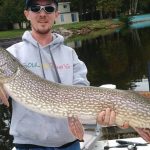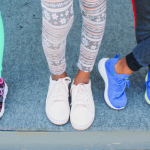Amer Groups consolidated net sales for the first quarter 2003 were 283.9 million ($306.6 million) versus 289.4 million in Q1 2002. The Groups operating profit was flat at 15.3 million ($16.5 million). Foreign exchange rate movements reduced net sales by 32 million and operating profit by 2.0 million, due to the strengthening of the euro especially against the US dollar. Return on capital employed (ROCE) was 17.9% compared to 17.5% in Q1 2002.
Geographically, sales were similar to 2002 in Europe but declined by 2% in North America, by 6% in Japan and by 7% in Asia Pacific.
Across the Groups divisions between January and March, fitness equipment sales were in line with expectations, and also the Team Sports Division continued to perform well. In the golf equipment market, competition continued to be tough and the Golf Divisions sales were clearly slower than last year. Due to the seasonality of the golf market, the coming second quarter is critical to golf sales for the year as a whole. The Racquet Sports Divisions sales were also behind 2002s rate. In Winter Sports, the season was reaching its end. Due to a lack of snow at the beginning of the season in Austria and Germany, sales were not registered at the level achieved last year. Sales of sports instruments were reduced by a decline in sales of Suuntos non-core products. Amer Tobacco’s sales declined 4% as the Finnish cigarette market shrunk.
The Racquet Sports Division net sales declined 23% to 56.9 million ($61.5 million), or down 10% in local currencies. Operating profit declined 40%, or 31% in local currencies. Sales declined 18% in North America and 4% in Japan. In Europe, sales were similar to 2002.
The Company estimates that the overall tennis market continued to decline in both Europe and the United States. Also, the average selling price of a tennis racquet continued to fall.
Racquet Sports net sales decline was mainly driven by low tennis ball sales and also by the timing of shipments of its new performance racquet. Sales of Wilson tennis racquets decreased 15%, tennis balls 12% and footwear 3%. Wilsons position as the global market leader in tennis racquets remained strong and in tennis balls Wilson remains number three.
Shipments of the new Triad racquets started in the United States in February. Shipments to other markets will start during the spring and summer. The new models are lighter and produce more power than the earlier models thanks to their Decometric geometry in the hoop and handle. Shipments of the new Pro Staff racquets started in January. New footwear was also brought to market.
In the Golf Division, net sales sank 36% to 42.6 million ($46 million), or down 25% in local currencies. Sales fell by 35% in North America and by 7% in Europe. The operating loss for the quarter widened twenty-fold to 2.1 million ($2.3 million) versus the year-ago quarter.
The overall size of the golf market remained similar to last year, according to the Companys estimates.
Sales of Wilson golf clubs decreased 20% due to later availability than planned of its new Deep Red II woods and irons. Also lower price point golf club sales declined.
The golf ball market continued to be extremely competitive and Wilson golf ball sales declined 33% as a result. The new Jack golf ball family has been well received by the trade although it is too early to predict consumer reaction. A new Wilson Staff True golf ball was also introduced in January and shipments started in February.
Due to the golf markets seasonality, the second quarter is critical to golf sales for the year as a whole.
The Team Sports Division saw a 12% decline in net sales for Q1 to 63.1 million ($68.1 million). Operating profit was down 7.0% to 10.9 million ($11.8 million). In local currencies, the divisions sales grew by 7% and operating profit by 13%.
The fastest growing product categories in Team Sports were basketballs (16%) and baseball and softball bats (11%). Wilson is the number one team sports company in the USA and its position is especially strong in American football, basketball and baseball.
During the period, a new NCAA Composite Basketball was introduced, featuring Cushion Core Technology for outstanding grip and feel. The Team Sports Division also shipped a new Wilson Youth Batting Helmet, a one size fits all helmet for Baseball and Softball.
The five-year match ball agreement with the National Collegiate Athletic Association (NCAA) took effect at the beginning of 2003, as a result of which Wilsons basketballs are used as official match balls in all NCAA games.
Winter Sports net sales fell 16% to 26.0 million ($28.1 million), or decreased by 12% in local currencies. Sales declined 15% in Europe and 5% in North America. Winter Sports operating losses were 3.6 million ($3.9 million) in this period. Due to seasonality, Atomic’s deliveries are heavily weighted towards the latter part of the year.
Net sales declined due to poor snow conditions in Austria and Germany at the beginning of the winter sports season 2002/2003. Thus, re-orders were low. Snow conditions got better towards the seasons end, such that stock levels are now mostly at a normal level.
The global winter sports market is estimated to have declined during the 2002/2003 season. Atomic retained its position as the no. 1 alpine ski brand in Europe.
In February Atomic presented the worlds first microprocessor-controlled ski bindings, Neox EBM 412.
The current level of pre-orders suggests there will be a slight downturn in the market in 2003, reflecting the cautious mood of the trade.
In 2003, Winter Sports investment in its sales organization is planned to be higher than last year.
Fitness Equipment net sales dipped 6.0% to 51.4 million ($55.5 million) versus pro forma sales of 54.9 million ($59.3 million). Sales increased 5% in local currencies and operating profit increased 31%. The fastest growing product categories were treadmills and elliptical cross-trainers.
North American commercial and consumer markets appear to be cooling. Major club organizations are holding off on purchases, and the government market has postponed investments in fitness equipment. Consumers are similarly cautious.
In February, a new line of C846 and C842 upright and recumbent cycles for club and commercial markets were brought to the market.
Despite general uncertainty, the fitness sector as a whole is expected to continue growing. Further growth is also anticipated in the popularity of elliptical fitness equipment. The Fitness Equipment Division has good growth opportunities especially outside North America.
In local currencies, Suuntos net sales were similar to last years level. Its growth was slowed down by the decline of sales of Suuntos non-core products.
Sales of Suuntos wristop computers and diving instruments maintained the levels achieved in the comparable period in 2002. Wristop computers and diving instruments accounted for 56% of Suuntos net sales.
Shipments of the Suunto M9 wristop computer for mariners began in January. In addition, Suunto announced in January a partnership with Microsoft. This cooperation will lead to the launch of a new line of Suunto n-series sports wristops in the North American market at the end of 2003.
In March Suunto sold its wholly-owned subsidiary Ilotulitus Oy to Truebell Plc. The net sales of Ilotulitus Oy in 2002 were 2.8 million.
At the beginning of 2003, Suuntos European central warehousing function was relocated to Amer Sports new logistics centre in Überherrn, Germany.
Outlook
Demand for sports equipment did not recover during the first quarter of 2003. In Amer Groups key markets, the US and Germany, both the trade and consumers remain cautious.
Growth in demand for tennis equipment is not expected for the remainder of the year. In golf equipment, the second quarter of the year is critical and it will therefore only be possible to estimate market growth after that. In team sports, the global market is forecast to remain flat. The growth in demand for sports instruments and fitness equipment continues, even though the growth in fitness equipment seems to be slowing down a little. The level of pre-orders indicates a slight downturn in the winter sports market for the forthcoming 2003/2004 season.
Traditionally, demand for sports equipment is less sensitive to the economic background, as the industry is also strongly influenced by sports-related factors like trends in the active following of individual sports and new innovations in sports equipment. Amer Groups operations are also well balanced by its broad portfolio of sports and its presence in all key markets.
Amer Group has set itself the goal of becoming the worlds No 1 sports equipment company. With strong cash flows from operating activities and a strong balance sheet combined with a good position in the sports equipment market, Amer Group has a firm foundation to advance the strategic development of its businesses. Amer Groups net sales for 2003 as a whole are expected to grow and operating profit to decline modestly from the record level achieved in 2002.
The Group employed 4,085 people at the end of the period under review compared to 3,939 at the year-end and an average of 4,056 during the period. At the end of the period, a total of 1,677 were employed in the US, 672 in Finland, 574 in Austria and 1,162 in the rest of the world.













